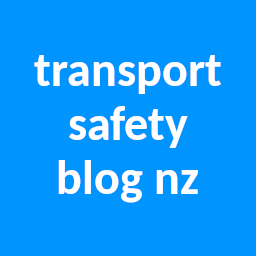The debate over the viability and future of the Gisborne Line is not new and dates back 40 years. Having that knowledge will aid considerably in understanding the relevance and context of ongoing discussion over the railway between Napier and Gisborne. The Napier Gisborne Line (part of the Palmerston North Gisborne Line) opened in 1942. The construction was very protracted due to concerns even then about its financial viability and a number of natural disasters during the construction era. The Napier Gisborne Line is expensive to maintain because it passes through much undulating country in a particular part of New Zealand where there is a high proportion of unstable land. Nevertheless in spite of many large scale washouts over four decades the line was kept open. The removal of competition protection from 1977 to 1982 appears to have seen a loss of interest from railway management in operating the route, a situation that persists to the present day. The railway was almost closed in 1988 after the Cyclone Bola storm but was kept open due to a political lifeline.
Politics is the main reason the Gisborne Line has stayed open beyond 1988, until another storm closed it in 2012. Many lines serving smaller rural areas routinely closed in New Zealand at various times, including several during the 1980s. The difference in the case of Gisborne is the large urban population in the city, which is seen as worth throwing money at for votes by left wing parties. It’s not because the railway line there has any particular merit compared to other railway lines around the country. An important fact that prevailed long term in Gisborne’s case was that it was allowed to keep its seaport through a period when many smaller harbours around the country had closed. This meant there was always a viable alternative means of long distance freight transport and again this is due to specific factors, not just the issues with the railway, but also the major highways which are often washed out for weeks at a time. The situation for Gisborne was the same as for Nelson in a preceding generation. Nelson City was politically targeted by Labour to get a new railway line in the late 1950s but only a small amount of construction work was done before a change of government forced a halt. Again, there was no expectation of the railway paying its way at that time.
Like the rest of the NZ rail network the Gisborne line transitioned from public to private ownership for a period, before returning to public ownership again. This period of change was the reason that a lot of less viable lines stayed open in NZ in the 1990s and 2000s. Each new owner took its time to discover which lines it could make viable. When ONTRACK took over ownership of the network in 2003, they were under no illusion at that point about the Gisborne line, having full insight into its many challenges. As the government of that time did not favour closure, ONTRACK’s strategy was to maintain the line to a suitable condition for a “public service” train to run once a week. This was inherited by Kiwirail when it was established in 2008, but the writing was soon on the wall again as KRL’s budget was slashed after another change of government. The closure that followed in 2012 was inevitable. Even in 2003, Labour government policy clearly favoured roads; the then regional development minister responded with package of highway improvements to help the logging industry but made no effort to engage with the railway system. During the 2017 election campaign Labour promised to look into reopening the railway but under the condition it could be shown to be viable. Provincial Growth Fund dollars were found to bring the Napier to Wairoa section back into service, but not the Wairoa to Gisborne segment because there was not strong community support in Gisborne for it; the port was seen to be the clear leader instead. The debate is continuing in part because each major storm brings further damage. it is now almost inevitable that the line will remain closed for good.
